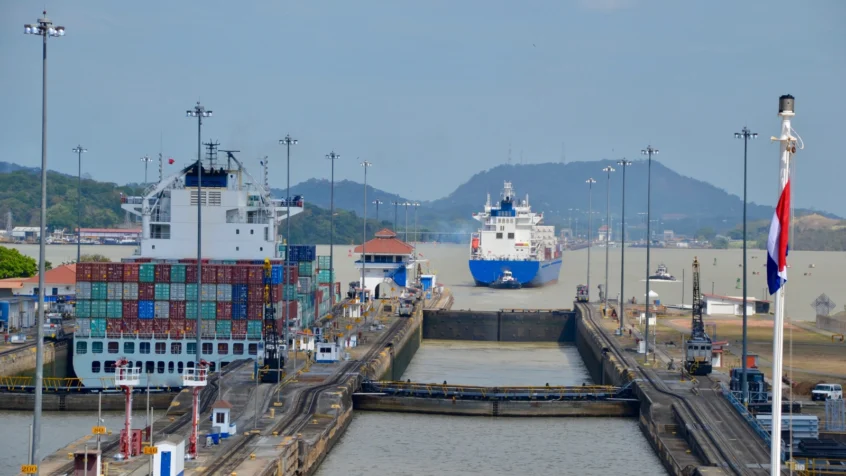The Panama Canal, a crucial artery for global trade, is facing a squeeze. While container ships are finding a silver lining, the overall number of transits is plummeting, and climate change sits at the heart of the issue. Let’s dive into the current situation and explore what it means for the global economy.
Droughts Bite, Traffic Drops
Water Woes:
The main culprit is a severe drought, potentially exacerbated by climate change, leading to record-low water levels in the canal’s Gatun Lake. This vital source replenishes the water used to raise and lower ships through the locks.
Transit Tumble:
The Panama Canal Authority (ACP) reported a 42% year-on-year drop in transits for December 2023 compared to December 2022. The overall number in December 2023 was also 25% lower than in October 2023.
Container Craze in a Shrinking Pie
Shifting Sands:
While the total number of transits is down, container ships are bucking the trend. They saw a 5% increase in transits from October to December 2023, capturing a larger share of the shrinking “Panama pie.”
Dry Bulk Blues:
This increase comes at the expense of other vessel types, particularly dry bulk and LPG carriers, who are opting for alternative routes due to the water limitations.
Policy Shifts and Uncertain Futures
Canal Capacity Crunch:
The ACP initially planned to further restrict daily transits in January and February 2024 to 16 and 18, respectively. However, they reversed course, raising the number to 24 per day.
Lingering Concerns:
This increase offers some relief, but uncertainties remain. Draught restrictions are still in place, potentially limiting container capacity despite the higher transit numbers.
Climate Change Casts a Long Shadow
A Warming World, a Shrinking Canal:
The current drought highlights the vulnerability of the Panama Canal to climate change. Rising temperatures and altered rainfall patterns threaten the long-term water security of the waterway.
Adapting to a New Reality:
The ACP is undertaking expansion projects and exploring water conservation measures, but adapting the canal to a changing climate will be a complex and ongoing challenge.
The Ripple Effect on Global Trade
Costly Delays:
The disruptions at the Panama Canal led to shipping delays and increased costs for businesses worldwide. This can translate into higher prices for consumers.
Supply Chain Strains:
The Panama Canal is a vital link in global supply chains. Its struggles add to existing disruptions, exacerbating shortages and uncertainties in various sectors.
The Panama Canal’s situation serves as a stark reminder of the interconnectedness of our world. Climate change, impacting a seemingly remote waterway, can have far-reaching consequences for the global economy. As we navigate this evolving landscape, finding sustainable solutions for both the canal and our planet is crucial.

